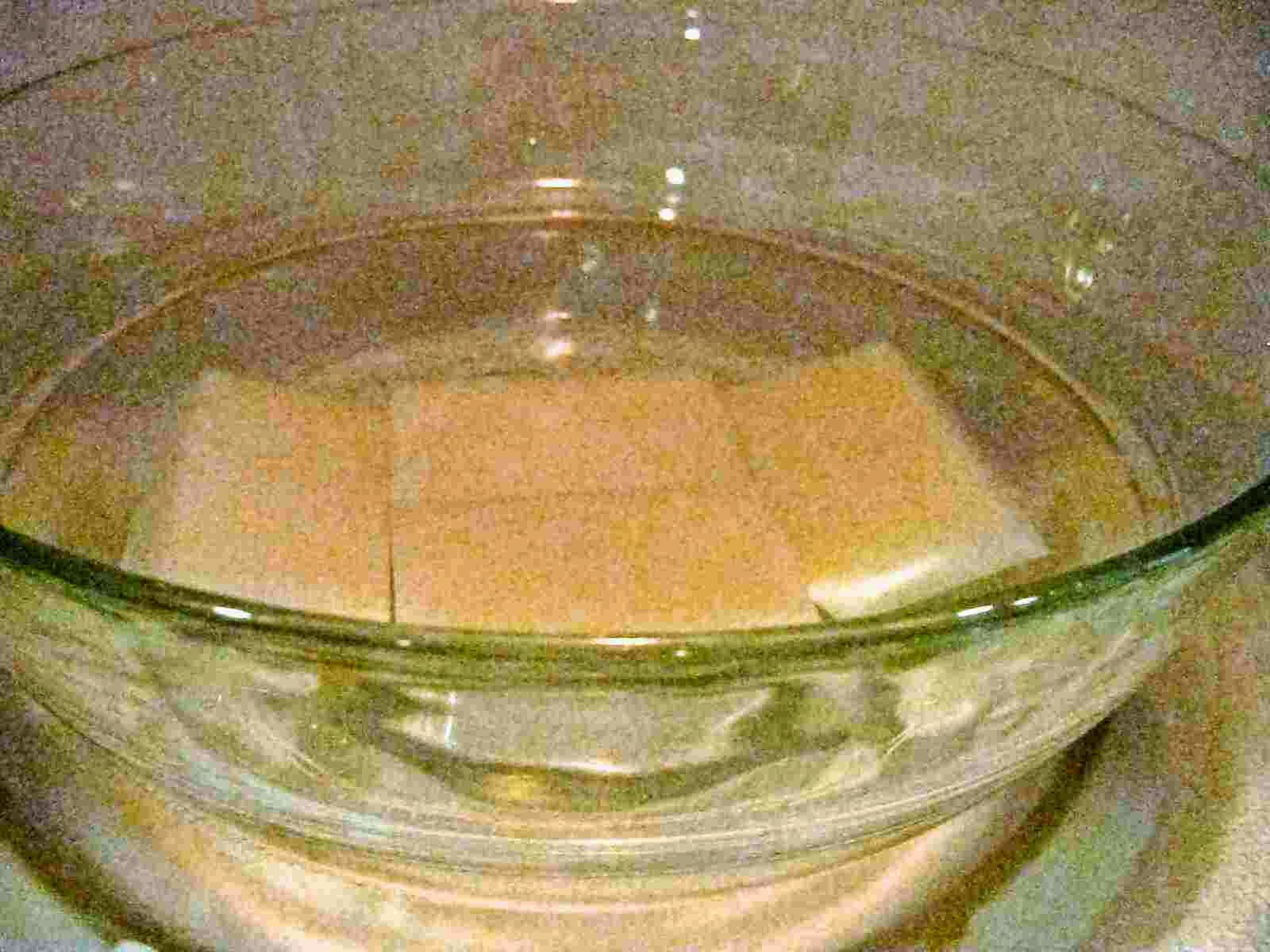Also called kinakomochi, abekawamochi are heavenly soft rice cakes coated with a mixture of kinako soybean flour and sugar. Traditionally, mochi are baked then soaked in hot water to soften before coating with kinako. The abekawamochi I know from my childhood was always made with hot, freshly made rice cakes. Nowadays, individually packed square or round hard rice cakes are available for everyday use; here is a quick way to make a yummy and very filling snack.
1 abekawamochi (1/4 of recipe):
135 calories; 2.8 g protein; 0.9 g fat; 28.0 g carbohydrate; 27.3 g net carbs; 1 mg sodium; 0 mg cholesterol; 0.7 g fiber
<Ingredients>
(Makes 4 abekawamochi)
4 mochi rice cakes
For kinako coating
2 tbsp kinako roasted soybean flour
2-3 tsp sugar
<Directions>
1.
Place mochi in a microwaveable bowl, and put water to cover mochi.
Microwave until mochi reaches desired softness.
(Mochi is very soft after microwaving for 4 and a half minutes.)
2.
Meanwhile, in another bowl, mix kinako and sugar well.
3.
When mochi is soft, coat with kinako + sugar mixture.
<Notes>
1 abekawamochi (1/4 of recipe):
135 calories; 2.8 g protein; 0.9 g fat; 28.0 g carbohydrate; 27.3 g net carbs; 1 mg sodium; 0 mg cholesterol; 0.7 g fiber
<Ingredients>
4 mochi rice cakes
For kinako coating
2 tbsp kinako roasted soybean flour
2-3 tsp sugar
<Directions>
1.
Place mochi in a microwaveable bowl, and put water to cover mochi.
Microwave until mochi reaches desired softness.
(Mochi is very soft after microwaving for 4 and a half minutes.)
2.
Meanwhile, in another bowl, mix kinako and sugar well.
3.
When mochi is soft, coat with kinako + sugar mixture.
<Notes>
- Microwave time depends largely on the number of mochi and amount of water. When microwaving fewer mochi with less water, it could take as little as 2 minutes or less. Microwaving too long actually "melts" the mochi. When trying this for the first time, check often to see how soft mochi is.
- How much sugar to mix in kinako is up to you. Using an amount of sugar equivalent to half (or less) of kinako is a common proportion.
- Serving abekawamochi with sweetened azuki bean paste is said to have become common. I have never had this combination myself. The sugar mixed in kinako seems sweet enough....
- The story behind the name: Abekawamochi goes back to the early 17th century when Shogun Ieyasu Tokugawa stopped by a tea shop in the Abekawa region of Shizuoka in central Japan. Abekawa River was known for panning of gold, and the tea shop owner created this impromptu snack of rice cakes dusted with yellow (gold) flour to serve with tea. Ieyasu really liked the creation, and gave it the name.
- The above nutrition figures are based on consuming 75% of kinako and sugar. (Some kinako and sugar remain in the prep bowl after coating mochi.)
- While most kinako is yellowish, there also is a greenish type, which is usually called ao kinako [lit. blue (green) roasted soybean flour] or uguisuko [lit. bush warbler (color) powder].







No comments:
Post a Comment